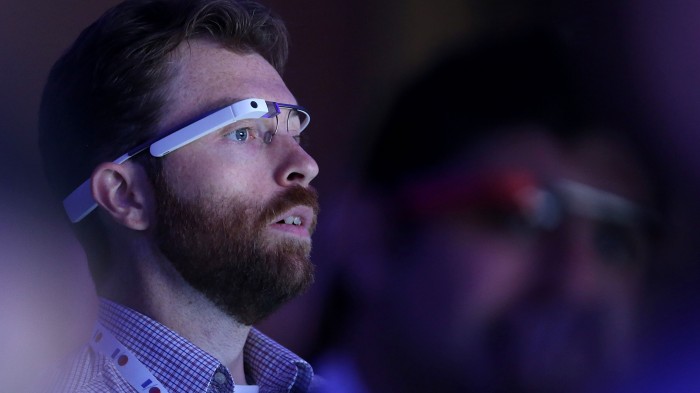Apple Is Getting Real About Augmented Reality

Apple is reportedly planning to bring augmented reality to the masses.
According to Bloomberg, Apple’s CEO, Tim Cook, plans for the company to add AR features to the iPhone and, later, launch a pair of smart glasses that allow users to augment their reality. The hope: to make the technology a widely available and compelling consumer product before other companies manage to, in order to provide a much-needed new reason to stick with Apple.
Apple will be playing a high-stakes game, betting that we’ll all want to improve our digital lives with augmented reality. But while software for a phone is one thing, the company will have to work hard to avoid repeating past mistakes in the arena of wearable devices like the Apple Watch and Google Glass.
This is by no means the first time we’ve heard reports of Apple’s AR ambitions. Last summer Cook said it was a technology that Apple was “doing a lot of things on behind [the] curtain.” And late last year reports surfaced that Apple was interested in building AR spectacles.
The latest report, though, suggests that Apple has been doubling down on its efforts to advance the technology. It has amassed a large team of software developers and hardware engineers with experience working on the Oculus Rift and Microsoft HoloLens VR headsets, as well as staff with backgrounds in visual effects and computer games.
Sources tell Bloomberg that progress is being made, most notably with software for the iPhone. It describes, for instance, SnapChat-esque real-time video effects, as well as new ways to manipulate photographs. It’s likely that some of these features are similar to those already being developed by Baidu, whose software makes use of machine learning to add detail to the real world.
The new Apple software might not necessarily make it onto the iPhone as is. But its development certainly suggests that AR features may soon find their way onto the handsets.
The glasses are “further down the road,” according to Bloomberg. Rightly so. That’s a much larger challenge, with far more to go wrong. First, there’s the hardware to nail: if Apple doesn’t want a Google Glass-style failure on its hands, it’ll need to create something that’s both polished and (relatively) affordable. While Bloomberg says the device would lean on the processing power of an iPhone for the most part, there are still plenty of tricky design choices to be made, not least relating to optics and batteries.
Second, as we’ve argued before, Apple runs the risk of repeating its Watch mistake and building a new piece of hardware without a clearly defined use. The company will perhaps be hoping that its legion of experts can create, not just a compelling hardware offer, but also the kinds of software that will make the device fun and useful—maybe even something people soon find they can’t live without.
But those are ambitious goals for an unproven technology. It will be interesting to see how Apple’s AR turns out in reality—and whether or not its gamble pays off.
(Read more: Bloomberg, “If Apple Builds Smart Glasses, They’d Better Be Spectacular,” “Baidu Is Bringing Intelligent AR to the Masses,” “How to Read Between the Lines of Tim Cook’s Epic Interview”)
Keep Reading
Most Popular
Large language models can do jaw-dropping things. But nobody knows exactly why.
And that's a problem. Figuring it out is one of the biggest scientific puzzles of our time and a crucial step towards controlling more powerful future models.
The problem with plug-in hybrids? Their drivers.
Plug-in hybrids are often sold as a transition to EVs, but new data from Europe shows we’re still underestimating the emissions they produce.
Google DeepMind’s new generative model makes Super Mario–like games from scratch
Genie learns how to control games by watching hours and hours of video. It could help train next-gen robots too.
How scientists traced a mysterious covid case back to six toilets
When wastewater surveillance turns into a hunt for a single infected individual, the ethics get tricky.
Stay connected
Get the latest updates from
MIT Technology Review
Discover special offers, top stories, upcoming events, and more.